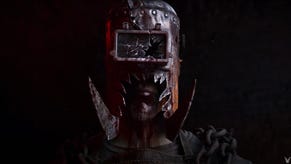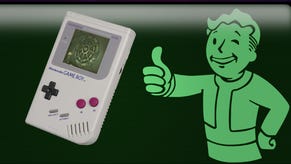Until Dawn: three types of fear and the horror machine
Horror's back, and Until Dawn plans to be at the genre's forefront next year. Patrick Garratt speaks to Supermassive about its PS4 exclusive.
"I think there's massive demand for this. We think it's as close to an interactive horror movie as you can get. There's an absolute appetite for this sort of thing."
Until Dawn is something new. Developer Supermassive is unashamed in its mission to create an interactive film with its PS4-exclusive horror title, and the result is a game in which anyone and everyone can die, anyone can survive, and whoever gets killed stays killed. There's a psycho, a SAW voice and the sort of choices you hoped had been left in movies such as Hostel. You've never seen a horror game like this before. Supermassive is taking the concept of fright seriously.
"There are three types of fear," said executive creative director Will Byles, speaking in Germany. "There's terror, horror and disgust, and the one we want to use the most is terror.
"Terror is the dread of an unseen threat. It's always there. It rises or falls in strength, but it's always there. That threat is, obviously, the thing you're going to have at the back of your mind the whole time.
"The second fear is horror, which is the culmination of the terror, the realisation, the manifestation of the terror. It's when you see it up close and face-to-face. And the third one is disgust, the gory reminder of how fragile you are, that you can be just torn apart. That gore isn't just about disgust, but about reminding you of your vulnerability."
Supermassive mixes the three elements, as well as incorporating lulls, "to create a journey of fear." And it doesn't just go with gut instincts. Science is involved.
"We test people with a fear machine," said Byles. "It's basically a galvanic skin response test. We get someone in and we sit them in a darkened room with the game and we wire them up with this thing that measures the conductivity of the skin. The more anxious and frightened you get, the clammier your hands get as you start to sweat, and it reads it and plots a graph against what's being playing at the time.
"We're not building the game around that by any means, but we do like to make sure we are hitting the right marks."
Moving away from Move
Until Dawn was announced in 2012 as a Move title, before vanishing and resurfacing in 2014 for PS4. The ride may have been rocky for Supermassive, but Byles couldn't be happier with the end result.
"We got massive community feedback saying they wanted a non-Move version. We went away and talked to Sony, and we looked at all the pros and cons, and at that time PS4 was coming along. DualShock 4 does pretty much anything you want to do that we were doing with Move, and it meant we could go third-person, which we believe it much more frightening. And, obviously, there was a dramatic increase in the graphics.
"We've changed it from this Move-titled game to something more mainstream. We've upped the age of the story as well, so it's much less teen-horror and much more horror-horror, so it has a darker storyline that we couldn't have done in the same way with Move."
While Until Dawn, a tale of a group of young people trying to survive a night, has edged into harder territory, don't expect anything too revolting.
"I think it is mainstream, yes," said Byles. "We try to get as many elements as we can from horror of the time, but yes, it is mainstream. We wouldn't want to call ourselves extreme, a gore-fest or anything like that. Absolutely not."
He added: "We've recorded people playing this who've been playing like this [he covers his face with his hands], but not because of gore, just because of terror. They're just too frightened to watch. We wouldn't want people to turn away from the screen because of gore.
"We definitely use it, but not in a gratuitous way. But, having said that, the reason we do use it is as a reminder of how fragile you are. We do want it there. It does play a vital role, but it can be very overused. When I talk about the trio of fears, that's the lowest one we use. We use it least frequently."
There's a reason Supermassive is going to great pains (sorry) to frighten you: Mikami isn't the only one yearning for a resurgence in truly scary video games.
"We're trying desperately to take horror back to the roots of horror," said Byles. "A lot of horror games have become action games and shooters, and not necessarily what were the original scary, tense horror games. I do feel things are heading back that way now. Certainly we are doing that. There is action in this game - it isn't just exploration - and there is shooting, but it's not a key element.
"I think there's massive demand for this. We think it's as close to an interactive horror movie as you can get. There's an absolute appetite for this sort of thing."
Until Dawn releases for PS4 next year.


















.png?width=291&height=164&fit=crop&quality=80&format=jpg&auto=webp)